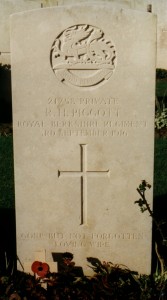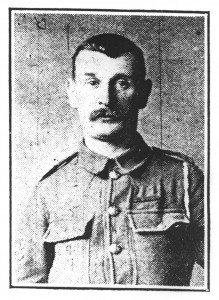Harry Piggott
Private 21758
8th Royal Berkshire Regt.
Division 54
 |
Harry Richard Piggott is commemorated on a scroll headstone on the grave of his father Richard Piggott and probably also that of his mother Kate. The 1911 census indicates that he was living at 51, Katesgrove Lane, Reading.His fathers occupation is given as boat man, Harry worked as a labourer at the Brewery and his younger brother as an ironmongers messenger. He was born in July 1892 in Weybridge, Surrey although the rest of his family were born around the Reading area. He married in July 1915 in Reading.
Harry Piggott was killed on September 3rd 1916 in the battle for High Wood on the Somme. High Wood was an objective in the early days of the Somme battle. It escaped capture for many weeks due lethal machine guns and a well fortified trench in the northern part of the wood. Thousands of men were killed attempting to capture this vantage point from the Germans. The first major attack was in a well documented night assault, the cavalry were to play a part in one attack but time and time again the Germans made a successful counter attack. For the 8th Berks. zero hour was noon September 3rd , the signal a mine explosion. Together with the 1st Camerons the Berkshire boys went over the top, some were killed in their own barrage. After severe hand to hand fighting the trench was taken but. the Germans once more counter attacked and by 3.30p.m three officers and one hundred men had been killed and the battalion was back at its original starting point. Again “the hell they called High Wood” was so nearly in the grasp of the British. It was finally taken on September 15th 1916, the same day that tanks were used for the first time in battle.
Harry Piggott is buried in Caterpillar Valley Cemetery, location X.D.2. His headstone bears an inscription from his wife. A picture of Caterpillar Valley Cemetery appeared on a Post Office Millennium Stamp launched 8th October 1999.

